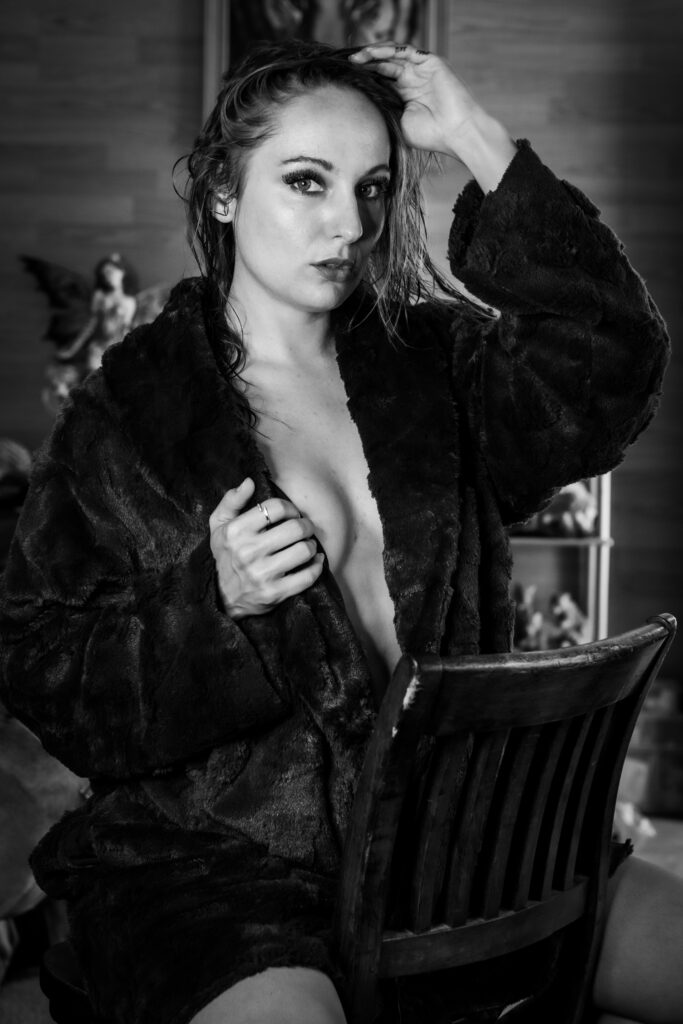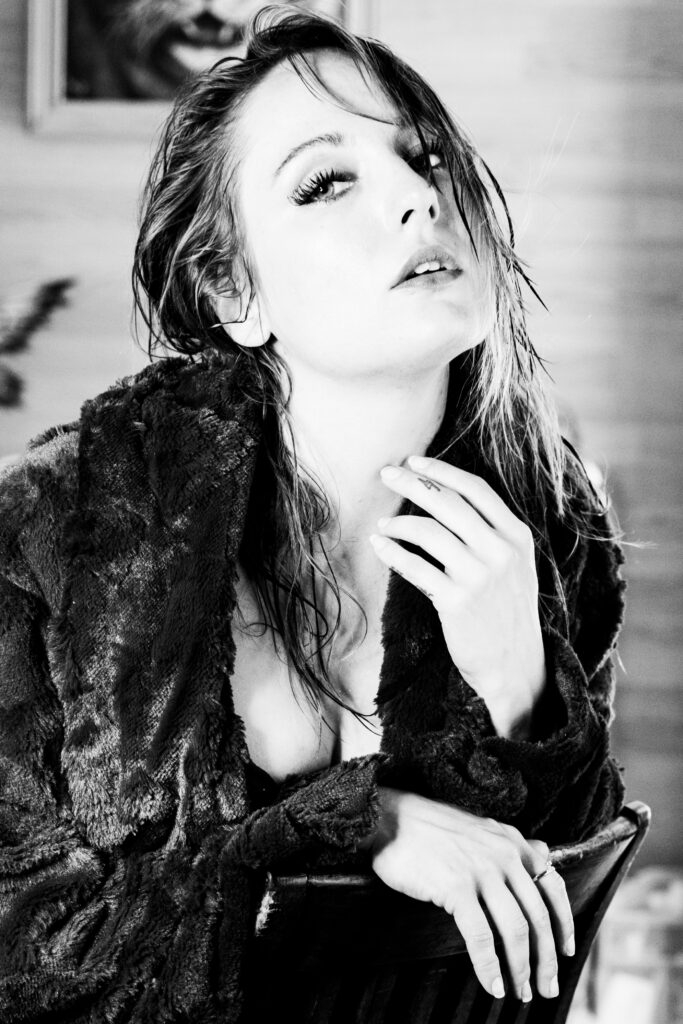
Photographic Review: “Tabatha Deuel” –
By Valley Photomaster
Introduction: The Power of Black and White Portrait Photography
Black and white portrait photography is a timeless art form. By removing color, the image directs attention to light, contrast, and emotion. In this detailed review of the portrait titled “Tabatha Deuel”, we explore how this image excels in composition, lighting, and storytelling.
Composition and Framing
This portrait uses a vertical frame that emphasizes the subject’s pose and presence. The model sits backward on a wooden chair, creating strong visual lines. Her robe is slightly open, and her hands are naturally placed—one adjusting the fabric, the other running through her hair. These small gestures add movement and emotion. The centered composition helps draw immediate attention to the model’s expression and body language.
Lighting: A Key Strength in This Portrait
Lighting is the strongest element in this black and white portrait. A single directional light source—possibly natural window light or a softbox—illuminates the model’s face and robe. Shadows fall in a way that enhances facial features and texture. This controlled lighting adds depth and mood to the photo, a hallmark of excellent black and white portrait photography.
The Impact of Black and White
The decision to shoot in black and white brings out emotional weight and visual clarity. Without color, viewers focus on the interplay between light and shadow. The plush texture of the robe becomes more defined. Details in the eyes and hair stand out. The grayscale treatment allows for stronger contrast, making the portrait more striking.
Background Elements and Storytelling
While softly blurred, the background offers subtle storytelling cues. Figurines and framed art suggest a personal or artistic setting. These elements, though out of focus, add depth and personality to the image. The depth of field separates the subject clearly from the background while preserving context.

Technical Execution and Image Quality
Technically, the photo is well-executed. The model’s eyes, lips, and robe details are in sharp focus. Exposure is well-balanced—no blown highlights or crushed blacks. The noise level is low, indicating a well-chosen ISO setting. Post-processing appears clean and enhances clarity without over-editing.
Conclusion: A Striking Example of Black and White Portrait Photography
“Tabatha Deuel” is an excellent example of black and white portrait photography done right. It combines technical skill with emotional depth. The image captures the viewer with its lighting, composition, and confident styling. For photographers looking to improve their portrait work, this photo offers a strong lesson in how simplicity, contrast, and direction can create compelling results.

